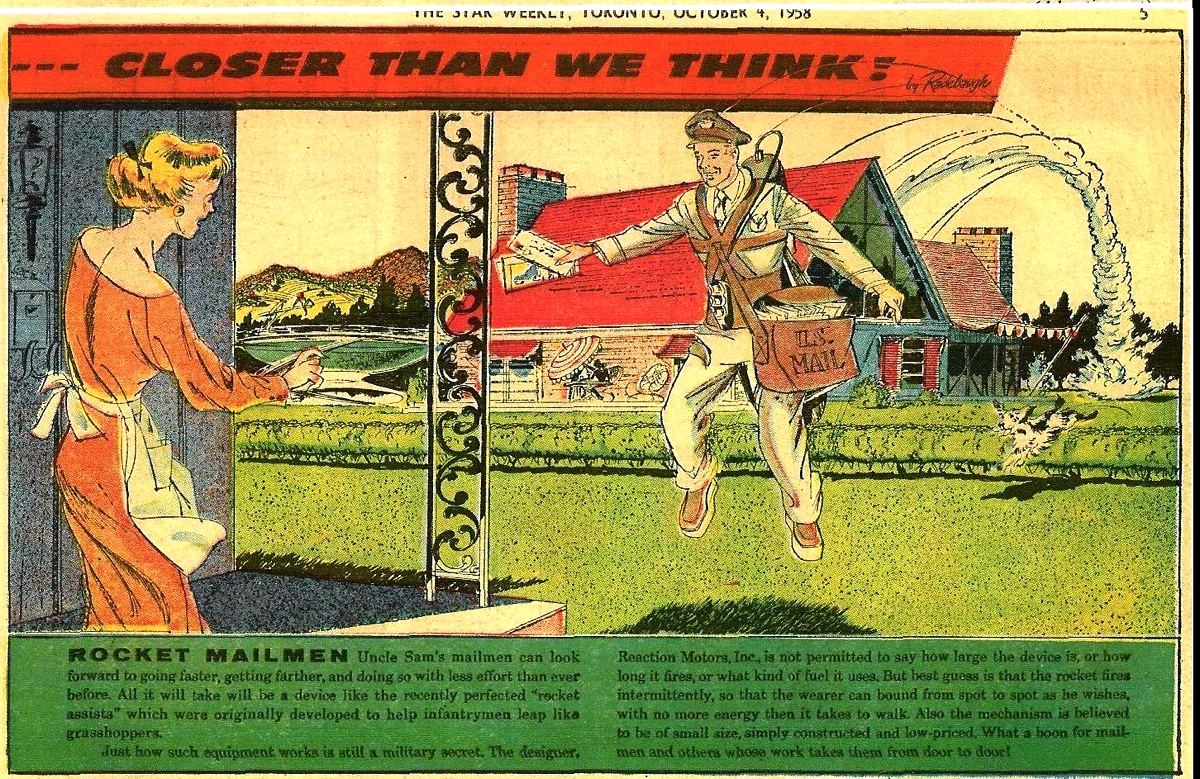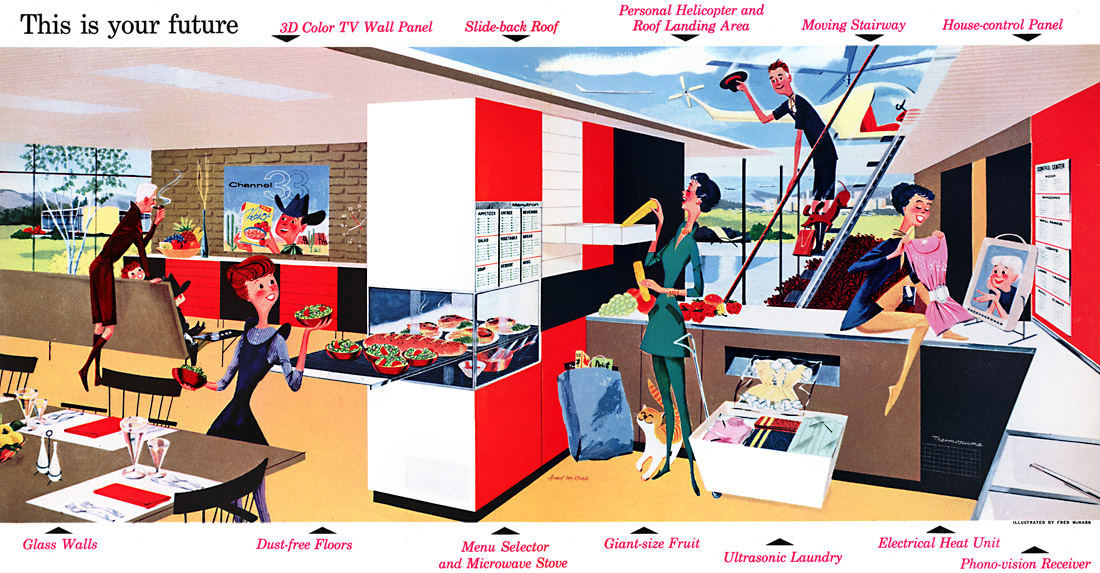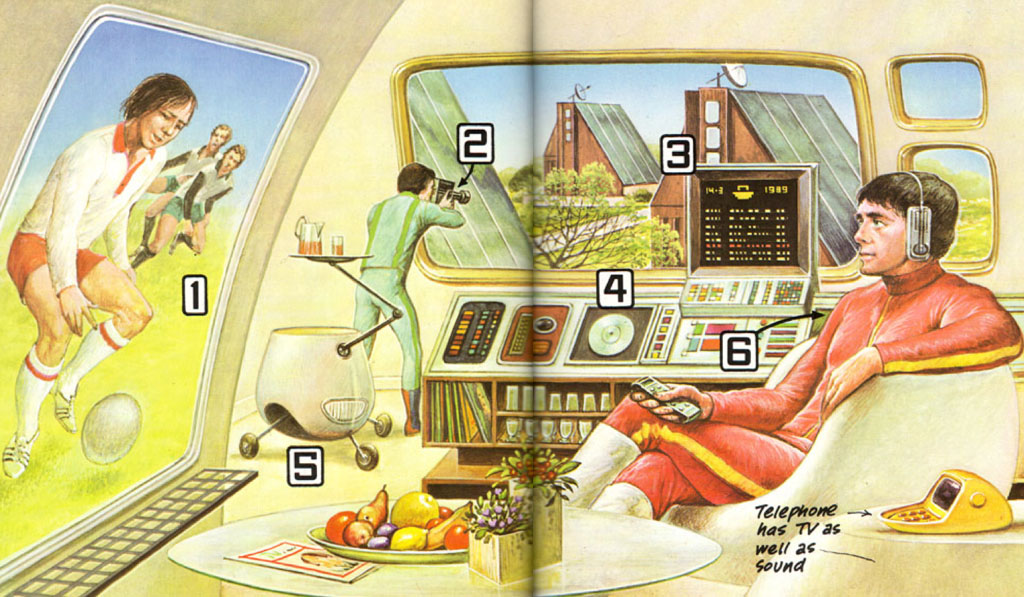The best visualisations of the future stay with us.

Closer Than We Think: Rocket Mailmen, The Star Weekly, Dec. 25, 1960 -Arthur Radebaugh
They are weird and wondrous, satisfying a yearning for novelty. They are optimistic and easy - we haven’t had to struggle for this intriguing future, it is here already. And these single representations then spawn a cascade of similar visions and all these fragments of the future click together, locking these ideas firmly in the public consciousness.
The reality of claiming a fictional futures is obviously harder. Science, technology, engineering and society may take many lifetimes to hammer into forms and functions the ideas visualised by artists in minutes, hours or days.
So when these futures finally become reality, it's taken humanity a long time to get there. We're tired. The result is all too familiar to be impressive. We have future fatigue, a confused disappointment typified by catch cries like "Where's my jetpack?". Yearning for an old vision of the future, but failing to realising the technology already exists, still lacking practical adaptation.
Rather than take the artist's illustration as a blueprint to be doggedly executed, let's instead borrow their optimistic, blue sky approach and recast our vision of the future.

American Weekly, Jan. 22, 1956 -Fred McNabb

